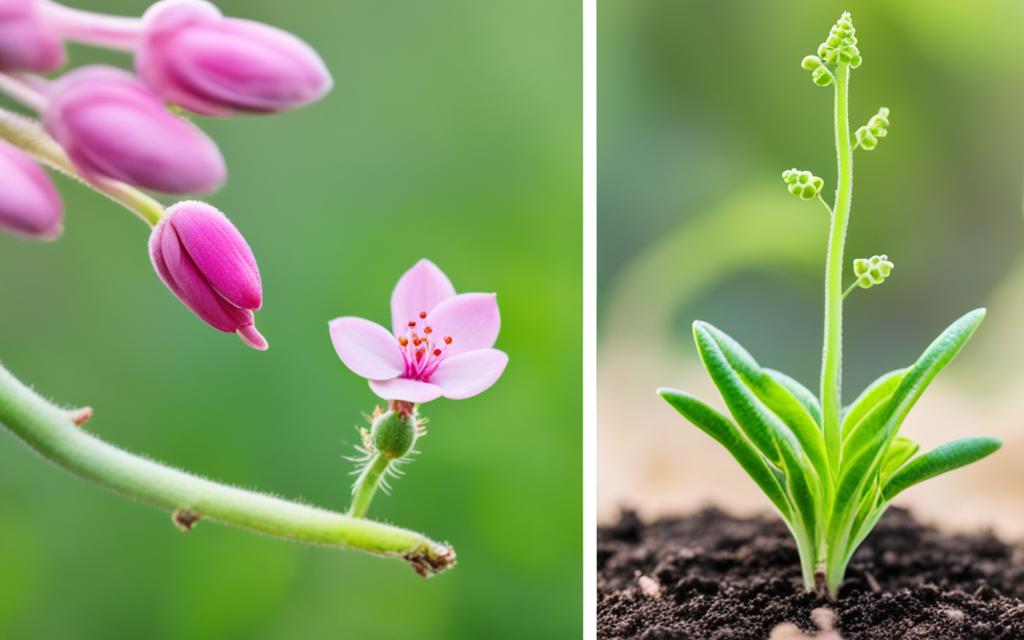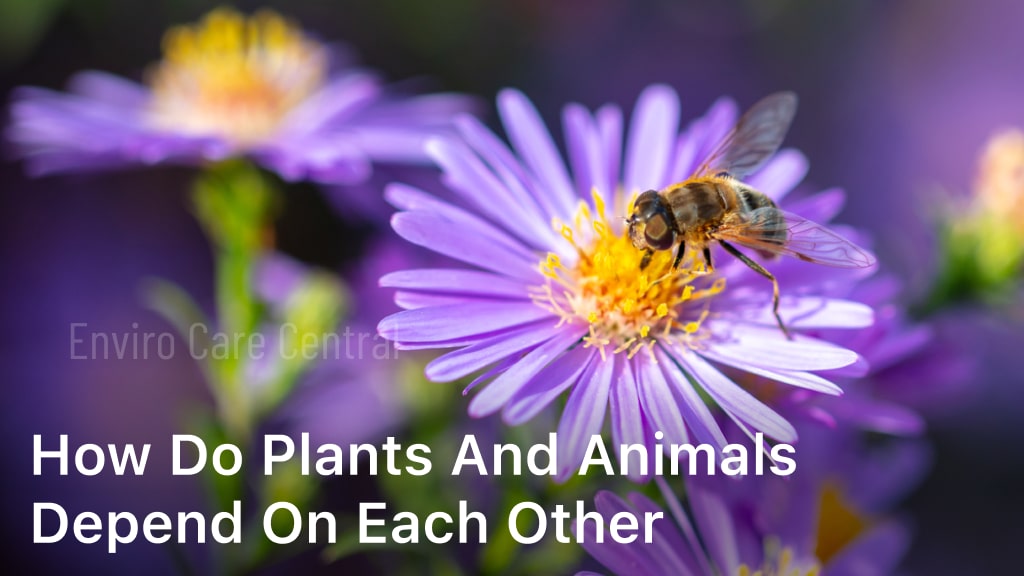How to Make a Male Plant Female – A Simple Guide

Welcome to a deep dive into the intriguing world of transforming male plants into female plants. We’ll cover everything from plant genders basics to detailed steps on feminizing male plants. This article equips you with what you need to know and have to manipulate plant sex effectively. It’s for anyone keen on gardening, cannabis cultivation, or fascinated by the plant kingdom. Join us as we explore the interesting process of plant sex reversal.
Understanding Plant Genders
At the start of understanding how to make male plants more like female ones, we must grasp basic concepts. In botany, plants are either male or female. Each has a key part in making new plants happen. For example, males create pollen, and females grow flowers and seeds.
Male vs. Female Plants
Male and female plants stand apart by what they make to reproduce. Males have parts that make pollen. Females produce flowers and then fruits and seeds. Working together, they ensure the plant species continues to grow.
The Importance of Female Plants
Female plants are crucial for the plant world’s survival. They make flowers attract pollinators. When pollinators move pollen, seeds and fruits form. These seeds and fruits help plants spread and feed many animals.
Knowing how male and female plants differ is important. It helps us understand why female plants are so key. This knowledge will help us in gardening and experiments about plant growth.
Identifying Male and Female Plants
The first step in feminizing your plants is to know their gender. Look closely at their reproductive parts. You want to see if they have pollen sacs. This helps us see if they are male or female. Remember, this is key for choosing which plants to feminize.
Observing the Reproductive Organs
Plant gender is known by their reproductive parts. Males have stamens for making pollen, and females have pistils and stigmas. Look at the flowers or these parts to tell them apart.
Checking for Pollen Sacs
Checking for pollen sacs is a good way to tell the genders. Males show their sacs, filled with pollen, on their flowers or stems. Females don’t have these sacs. They use their energy to grow their female reproductive parts instead.
Learning to look for these signs helps us know if our plants are male or female. This is important for later steps in making them female. Knowing the basics now will make our plant project a success.
Factors Influencing Plant Gender
In the fascinating field of plant biology, a plant’s sex can be changed by many different things. Knowing these essential [factors influencing plant gender] is key for those wanting to control plant gender. This is vital for making all-female plants.
Environmental Factors
Light, temperature, and food play huge roles in a plant’s gender. Different light levels, like how much light there is compared to darkness, can make the plant male or female. Changes in temperature and having the right nutrients also affect how a plant shows its gender.
Genetic Factors
A plant’s genes are also very important in deciding its sex. The genes a plant has, especially those that determine if it’s male or female, are crucial. Choosing parent plants with the right genes helps make sure the offspring is the sex we want.
When we combine knowledge of both the environment and genes, we can control plant gender. This is essential for turning male plants into female ones. It shows the important steps in making plants all-female.
Techniques for Feminizing Male Plants
As gardeners, we can make male plants act like females. We do this with two main methods: stress and chemicals. Knowing these tricks helps us change our plants’ gender. This lets us enjoy the perks of having plants with female traits.
Stress Induction Methods
To make male plants more like females, we stress them in the right way. This includes using light, temperature, and food in different ways. These tactics can turn male parts of a plant into female parts. They help the plant produce seeds like a female plant would.
- Adjusting light cycles: Carefully manipulating the duration and intensity of light exposure can disrupt the plant’s natural hormonal balance, leading to sex reversal.
- Altering temperature: Subjecting the plants to temperature fluctuations or extremes can induce stress and encourage the development of female traits.
- Nutrient deprivation: Limiting the availability of essential nutrients, such as nitrogen or phosphorus, can push the plants into a state of stress and sex reversal.
Chemical Treatments
Chemicals can also help make male plants more feminine. These substances can change the plants’ hormone system. This makes the plants act like females. Some of the chemicals used are:
| Chemical Treatment | Mechanism of Action | Effectiveness |
|---|---|---|
| Silver Thiosulfate (STS) | Inhibits ethylene production, leading to female flower development | Highly effective, widely used in cannabis and horticulture industries |
| Gibberellic Acid (GA3) | Promotes the production of female hormones, suppressing male traits | Moderately effective, can be used in combination with other techniques |
| Colloidal Silver | Interferes with the plant’s ability to produce male hormones | Effective, but requires careful dosage and application |
By using these methods and chemicals carefully, we can change our male plants into female plants. This gives us the chance to work with plants that have mostly female traits.
how to make a male plant female
The transformation of a male plant into a female one is called feminization. It’s achieved by using stress and certain chemicals. We can control the plant’s gender this way. We’ll explain how to turn a male plant into a female one. Our method aims to use the plant’s own abilities to change its sex. We start by applying specific stress like light, temperature, and altering nutrients. This triggers the plant to grow female traits.
But that’s not all. We also use special chemicals. These chemicals can adjust the plant’s hormones. They help stop the plant from growing male parts and instead grow female ones. By using both stress and chemicals, we can make the transformation smooth and successful.
Though this process is complex, careful attention is key. We need to watch the plants closely. And we must tweak our methods to make sure they’re growing well. Setting the right environmental conditions and making changes when necessary is essential. This ensures our efforts to turn male plants into female ones are consistently fruitful.
Preparing for the Feminization Process
Before starting the feminization process, preparing your male plants and their space is key. Pick the best male plants and set an ideal growing space. This will make feminization more likely to succeed.
Choosing Suitable Male Plants
To get ready for feminization, choosing the right male plants is important. Pick males that are very healthy and show strong growth. They should have good genes for a better feminization result.
Setting Up the Growing Environment
Besides picking the right male plants, the growing space must be just right for feminization. Make sure the area has perfect light, temperature, and nutrients. This will help the transition from male to female go smoothly.

Step-by-Step Guide to Feminizing Male Plants
This guide will show you how to turn your male plants into female ones, step by step. We’ll cover stress induction and certain chemicals that change male plants. This way, you’ll learn how to control your plant’s gender. This opens up new possibilities in your gardening or farming.
Applying Stress Techniques
To turn male plants into female ones, using stress is a key method. We can make plants respond in certain ways to become female. Different treatments and methods can stress the plants. This stress makes them develop female parts.
- Setting light cycles differently can stress the plants. This can make them turn into females.
- Changing the temperature can also stress plants and make them female. They respond to cold or heat by feminizing.
- Not giving plants enough of the right food is another method. This can stress them. Changing what they eat can change their gender expression.
- Gently physically distressing the plants can also help. Things like pruning or bending can trigger this process.
Remember, the best stress method can change. It depends on the type of plant and how it’s growing. Watching your plants closely and making quick changes is very important for success.
Monitoring and Adjusting
Watching your plants during feminization is crucial. By seeing how they respond to stress, you can tweak things to feminize better.
Watch how your plants grow and change. Look for signs like pollen sacs, female flowers, or stress symptoms. These are your clues for how well your plants are feminizing.
From what you see, adjust your stress techniques, the environment, or any chemicals you’re using. Doing this right helps your plants stay healthy. It also encourages the feminization you want. This back-and-forth of watching and adjusting is key for a successful feminization process.
Maintaining Feminized Plants
Congrats on feminizing your plants! Now, it’s key to keep them healthy and productive. You need to get the growing conditions just right. This includes light, temperature, humidity, and the right nutrients. These factors will help your plants flourish and produce better.
Providing Optimal Growing Conditions
Your feminized plants need the right environment. They depend on good light for growth. Make sure the light they get is strong and for the right amount of time. This helps them use light for photosynthesis and to make flowers.
Keeping the right temperature is also important. It’s different from what male plants might need. Adjust the temperature for your feminized plants to thrive.
Don’t forget about humidity. It should be similar to where these plants naturally grow. This keeps them healthy and away from mold or fungus.
Good nutrients are a must for feminized plants. Give them the right fertilizer. This way, they get all the nutrients they need and grow well.
Watch and change these factors as needed. This will make the perfect home for your plants. As a result, they will give you a great harvest.
Troubleshooting Common Issues
We’re about to feminize our male plants, but we might run into some problems. It’s key to tackle these issues early to keep our plants healthy. We’ll look at common problems and how to fix them during the feminization process.
Identifying and Addressing Problems
Spotting and fixing problems quickly is crucial for successful plant feminization. We’ll help you handle everything from plant stress to nutrient issues. You’ll learn how to find what’s causing these problems and solve them well.
If your plants look stressed – they might wilt or change color – it’s important to find out why. Troubleshooting common issues involves adjusting the environment or changing how you feminize. Sometimes, providing more of the right nutrients can help.
If your feminized plants turn back into males, we’ll show you what to do. By being alert and dealing with issues fast, your plants will keep producing. This keeps your garden healthy and productive.
Preventing Future Issues
It’s not just about fixing problems. We’ll also share tips to stop issues from happening. Knowing how to prevent trouble is key to a healthy garden. This means creating the best environment for your plants.
You might need to adjust your growing setup or be more careful about pests and diseases. By being proactive, your feminized plants will thrive. This leads to a rewarding gardening experience.
Benefits of Feminized Plants
Cultivating feminized plants brings many benefits. We already know how to change male plants into female. Now, let’s see what these special plants can do.
Increased Yield
Feminized plants can produce more. They focus on growing female parts like flowers and seeds. Because of this, you get a bigger harvest. This means more of what you’re growing, making your work more fruitful.
Consistent Quality
Feminized plants also mean you get the same good results every time. Without males around, there’s no mixing and making bad seeds. So, you end up with a crop that’s always high quality. Your customers and users will always get what they expect.
The great thing about feminized plants goes beyond just getting more or better quality. It’s about discovering new paths in gardening or studying plants. This leads to outstanding results for those relying on what you grow.
Ethical Considerations
When we look into making male plants more like females, we must think about ethics. Turning male plants into female ones has its good sides and its bad sides. It’s all about weighing the gains against the risks.
Legal Implications
Some places might have rules about changing plants from male to female. It’s key to know the laws in your area well before trying this. Not following these rules could get you in big trouble. It’s smart to talk with local experts to keep things legal.
Environmental Impact
The effect on nature is very important when we change plant genders. This can help in gardens, but it might not be good for the whole system. Things like new plant types or mixing genes can hurt the environment. We have to think ahead to protect our plants and our world well.
Thinking about ethics, the law, and nature’s health helps us make the right choices. If we use these methods, we have to make sure it’s for the best for everyone. That means looking after people, the environment, and our planet together.
Conclusion
We’ve covered a lot in this guide, diving into how to change male plants into female ones. This process is called feminization. We learned the basics of plant genders, how to spot male and female plants apart, and ways to stress or treat them to control their sex.
If you love gardening, grow cannabis, or just find plants interesting, this guide is for you. It teaches useful skills for anyone wanting to play with plant genders. You can learn how to turn male plants into female ones or even create female clones from male plants.
Now, we invite you to put what you’ve learned into action. By using feminization, you can open up new opportunities in gardening and farming. Let’s explore the fascinating world of plant sex together. See where it takes your green thumb or research.





